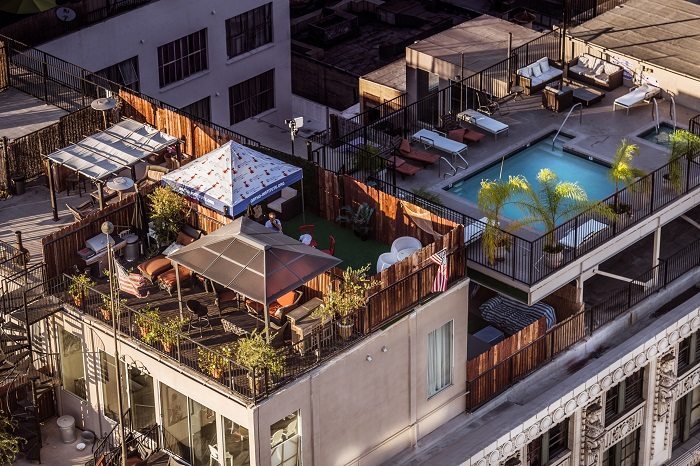
Anthurium

Showy flowers give bright color for eight weeks or more each year to anthurium (Anthurium andraeanum, also known as flamingo flower). Flowers typically are red, but you can find hybrids in shades of pink, lavender, white and even green. Anthurium flower blossoms make superb cut flowers because they last a long time. Note that the pretty, heart-shape leaves contain toxic sap, so make sure pets and children do not ingest them.
Size: To 2 – 3 feet high and 2 feet wide
Growing conditions: Medium to bright light with no direct sun; 65 – 80°F; evenly moist soil (barely moist in fall and winter)
Peace Lily

The easy-care peace lily (Spathiphyllum wallisii) tolerates low humidity and low light. Its glossy, lance-shape leaves tip arching stems that surround the central flower spikes. The spoon-shape flowers normally appear in summer, but many cultivars bloom intermittently throughout the year. The dark leaves look attractive in a plain pot with a glossy finish.
Size: To 1 – 6 feet high and 1 – 5 feet wide
Growing Conditions: Low to bright light; 60 – 85°F; evenly moist soil
Peperomia

Peperomia’s most interesting feature is its leaves, which vary in shape (heart shape to narrow), texture (waxy to wafflelike) and color (green, reddish or silvery gray). Plants occasionally produce slender flowery spikes that resemble rat’s tails. Use on tabletops and as a companion in dish gardens and mixed baskets. The plant tolerates the low light of a north windowsill and stays small enough to fit on a desk or to be used in a terrarium.
Size: To 6 – 12 inches high and 6 – 12 inches wide
Growing conditions: Low to medium light; 60 – 75°F; moderately dry soil
Snake Plant

This carefree, tough succulent grows almost anywhere. Snake plant (Sansevieria spp.) tolerates neglect but responds nicely to good care. Leathery, sword-shape leaves grow edged with yellow or white. Snake plant is great for beginners, but experienced houseplant growers also love it for its dramatic upright form. When grown in bright light, it sends up a tall stalk of greenish fragrant flowers. The dwarf rosette varieties make nice desktop or tabletop plants.
Size: To 6 – 48 inches high and 6 – 36 inches wide
Growing Conditions: Low to bright light; 60 – 85° moderately dry soil
Cast-Iron Plant

Slow-growing cast-iron plant (Aspidistra elatior) lives up to its name. It’s almost indestructible, withstanding neglect, low light, low humidity and a wide range of temperatures — perfect for a dark corner. Start with large plants since plants grow slowly.
Size: To 1 – 2 feet high and 1 – 2 feet wide
Growing conditions: Low light; 45 – 85°F; evenly moist soil (barely moist in fall and winter)
Pictured: Cast-iron plant (Aspidistra elatior)
Dieffenbachia

Arching pointed leaves up to 12 inches long, usually marbled with white or cream, grow out of a canelike stem. The large leaves of dieffenbachia (Dieffenbachia spp.) provide a tropical architectural accent; the plant also blends well into a mixed grouping of foliage. One of dieffenbachia’s common names, dumb cane, comes from the toxic sap in the leaves and stems that causes tongue numbness and swelling when chewed by humans or pets.
Size: To 1 – 6 feet high and 1 – 3 feet wide
Growing conditions: Low to medium light; 65 – 80°F; evenly moist soil
English Ivy

This versatile foliage plant’s dainty demeanor makes it suitable for hanging baskets or pots. It’s among the best houseplants for training on topiary forms or using as a groundcover beneath larger houseplants. Place English ivy (Hedera helix) on a mantel or shelf where the stems can hang down. The stems can grow quite long but are easily controlled with pruning.
Size: To 6 – 12 inches high and 6 – 72 inches wide, trailing
Growing conditions: Medium to bright light; 55 – 70°F; average to high humidity; evenly moist soil



